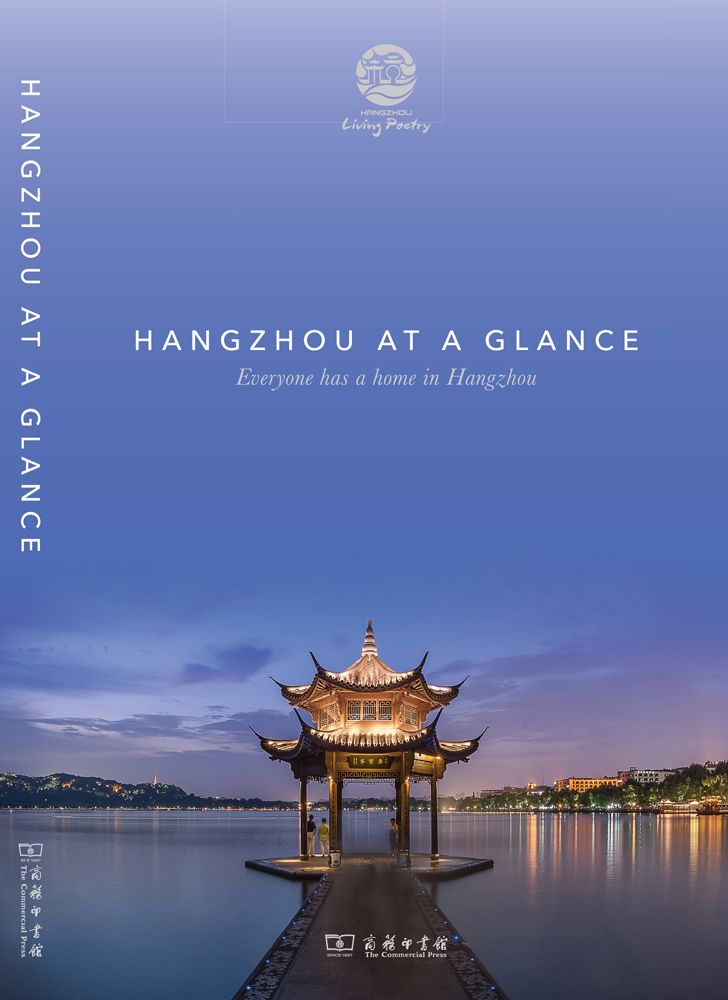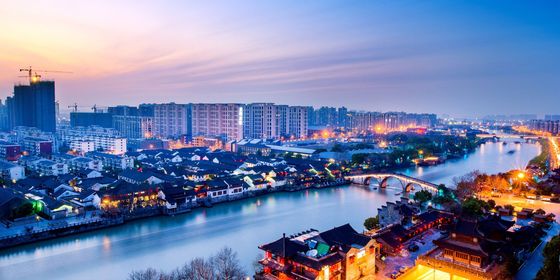An excerpt from TWOC’s recent publication, Hangzhou at a Glance
The World of Chinese, in conjunction with the Commercial Press, is proud to present an excerpt from Hangzhou at a Glance, a travel book to suit every person who visits or lives in the Chinese city of poets. The following is from the “Nature Lovers” section, concerning the Qiangtang River, a natural wonder in Hangzhou and an indelible part of the city’s history. Enjoy.
Qiantang River (钱塘江) is a capricious mother to the people that reside by her side. She is gentle and nurturing most of the time, but her dark mood swings have caused serious destruction.
Located on the lower reaches of the largest river in Zhejiang Province, Qiantang River runs through the central districts of Hangzhou from the southwest to the northeast. On its north is the city’s cultural and historical center spreading to the east side of the West Lake, the land that once held the capitals of the ancient Wuyue Kingdom and the glorious Southern Song Dynasty. The southern bank holds the city’s urban future—prospected by both the city government and private developers.
If you trace the river upstream to the west, you will encounter its middle and upper sections, Fuchun River (富春江) and Xin’an River (新安江). This road that trips through the Hangzhou-Qiandao Express Highway offers a refreshing experience that will immerse you in the beauty of the green mountains and gentle rivers along the way, eventually leading to the lake resort paradise, Qiandao Lake (千岛湖), or “Thousand-Isle Lake”.
Downstream, the Qiantang River runs into the East China Sea at Hangzhou Bay—a bell-shaped bay that opens up dramatically from a few kilometers to 100 kilometers. The unique shape of the river’s mouth, combined with tidal forces, created the world’s largest river tidal bore, where the difference between high and low tides can be as much as ten meters. It’s often described as roaring like thunder and resembling 10,000 horses galloping forward from the horizon. Though it appears every month, the best time to view the biggest tidal bore is around August 18 on the Chinese traditional calendar, which is around mid-September. As a popular tourism activity since as early as the seventh century, the event attracts tourists from all over the country.

The best location to view the tidal bore is in Yanguan Town (盐官镇), roughly 50 kilometers on the northeast of Hangzhou. But closer to home in Xiaoshan District, you can also find a tidal bore viewing area at Qiantang River Tidal Bore Watching Resort (钱江观潮城).
Though it is a special example of nature’s power, the tidal bore also poses a threat to the people along the river. Once flooded, it not only takes lives and destroys property, but the salty sea water can also ruin farmland for years.
Ancient people even created a legend to explain this natural phenomenon. It is said that a loyal minister named Wu Zixu (伍子胥) in the Spring and Autumn period was wrongfully forced to commit suicide by the king. In revenge, he pledged to turn into a spirit of the Qiantang River to haunt the city. It was the common belief that his spirit brought disaster, so the locals made sacrifices and held rituals to make peace with him.
It was King Qian Liu of the Wuyue Kingdom who finally had enough. Rebellious as he was, he led 500 soldiers to the bank and when the tide hit, he and his army shot 3,000 arrows into the tide to fight off the river spirit. Though it had about the same effect as the sacrifices, his act of defiance became a legend that served as testament to the determination of the local people to take fate into their own hands. Perhaps inspired by his spirit, the legend did have a happy ending that the wounded river god didn’t dare to haunt the city while it was under the protection of King Qian ever again. Today, you will find King Qian’s statue standing tall near King Qian’s Temple by the eastern bank of the West Lake, holding a bow and arrow, ready to fight for the city at any moment.
Countless years were spent building river dams here throughout history. In the Qing Dynasty, Emperor Qianlong visited Hangzhou six times. Though these royal visits would inspire endless bad TV dramas, he was just there to inspect the Qiantang River dams, which were of national importance.
Today’s modern architecture helps to keep the tidal bore at bay, but in recent years, there’s still occasional news of a tourist’s safety being compromised. So while appreciating the view, be sure to remember nature’s ruthless side and stay safe.
Excerpt taken from Hangzhou At A Glance by TWOC. You can pick up a digital copy on our China Dispatch app. Go get your copy now.













